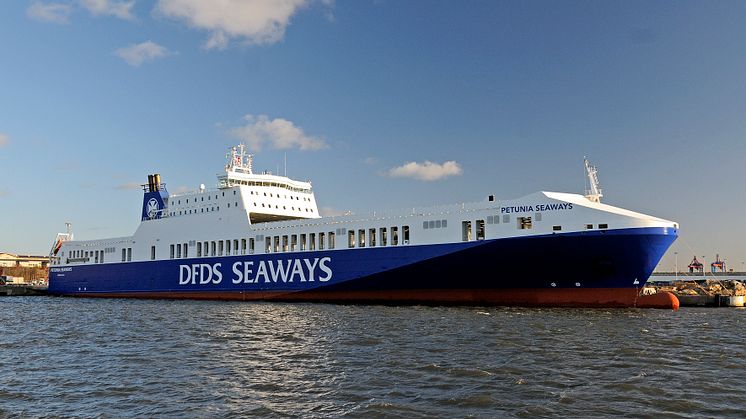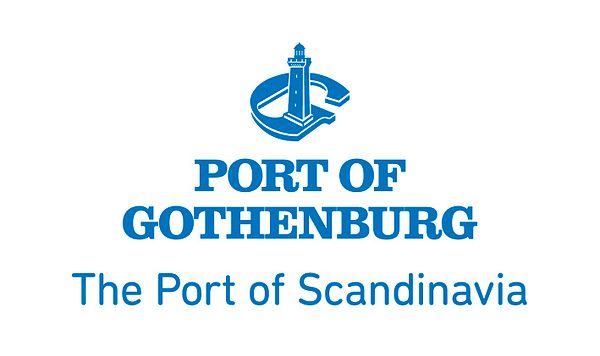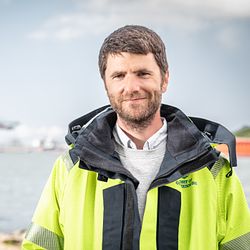
Press release -
DFDS connects vessels to onshore power supply in Port of Gothenburg
DFDS Seaways is about to connect its vessels to onshore power at the Port of Gothenburg. Six vessels are involved, all of which are in regular service to the UK and Belgium.
The decision will result in substantial environmental gains and a better working environment, both on board and ashore.
"This is a green milestone for DFDS and the Port of Gothenburg. We have worked towards this for a long time and we are extremely pleased that DFDS has taken up our offer of onshore power supply," says Magnus Kårestedt, Port of Gothenburg Chief Executive.
Onshore power supply (OPS) means that vessels shut down their engines while at berth and use power from the quayside to operate all the functions on board. Carbon emissions are reduced substantially and emissions of sulphur dioxide, nitric oxide and particles are kept to a minimum. OPS also results in a quieter port environment and a better working environment on the vessel.
The Port of Gothenburg was the first in the world to offer high-voltage OPS thanks to close collaboration with Stora Enso, which connected all its freight vessels back in 2000. Stena Line has connected all its passenger and freight ferries in Gothenburg to onshore power.
DFDS Seaways is set to follow suit and connect six vessels to onshore power, which in effect means that all ships that call at the Port of Gothenburg ro-ro- and passenger terminals shut down their engines when at berth – which is also the Port's target through to 2015.
Magnus Kårestedt continues: “Thanks to the DFDS investment we are close to achieving our short-term vision for onshore power supply and we remain firmly at the forefront internationally.”
Once the DFDS vessels have been connected, probably at the end of 2013, 40 per cent of all vessels calling at the Port of Gothenburg will be able to connect to an OPS. This is a very high percentage by international standards. Some 30,000 tonnes of carbon dioxide will be saved each year, of which the DFDS investment will account for around 13,000 tonnes.
Major investment at Älvsborg Ro/Ro
DFDS is investing around SEK 50 million to prepare the six ships in question and will receive SEK 10 million in grants from the EU. The Port of Gothenburg will cover the necessary land investments at Älvsborg Ro/Ro, the terminal at which the DFDS vessels will berth. A further two quays will be equipped with OPS facilities – an investment totalling SEK 8-10 million.
Financially more attractive
OPS has become financially more attractive to shipping lines since the government cut the tax on electricity for vessels last year from SEK 0.28 per kilowatt-hour to a symbolic 0.05 per kilowatt-hour.
Six sister ships
The ships that will be connected to onshore power are all sister ships, built between 2003 and 2006, and operating on the Gothenburg-Ghent and Gothenburg-Immingham routes. The six are PRIMULA SEAWAYS, PETUNIA SEAWAYS, MAGNOLIA SEAWAYS, FREESIA SEAWAYS, FICARIA SEAWAYS and BEGONIA SEAWAYS.
For further information, please contact Cecilia Carlsson, Communication Manager, Port of Gothenburg, +46 (0)31-731 22 45.
Categories
Fact file: Port of Gothenburg
The Port of Gothenburg is the largest port in the Nordic region with 11,000 visits by vessels each year. One-third of Swedish foreign trade passes through the Port of Gothenburg as well as 65 per cent of all container traffic.
The Port of Gothenburg is the only port in Sweden with the capacity to receive the world's largest container vessels and has the broadest range of shipping routes within and outside Europe. The 26 rail shuttles that depart each day mean that companies throughout Sweden and Norway have a direct, environmentally smart link to the largest port in the Nordic region. The Port of Gothenburg has terminals for energy, cars, ro-ro, containers and passengers.

